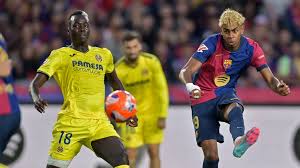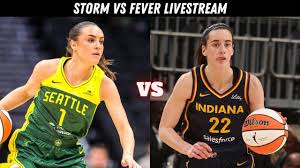
Introduction to La Liga
La Liga, also known as Laliga, is more than just a football competition—it’s a cultural phenomenon that has shaped the world of sports. Founded in 1929, it has become one of the most competitive and entertaining leagues, drawing millions of viewers globally. From breathtaking goals to tactical masterclasses, every Barcelona game or thrilling underdog story makes Laliga stand out as a league that blends passion with artistry.
What separates La Liga from other European competitions is its identity. Unlike the Premier League, known for its physicality, or Serie A, famous for its defensive strength, Laliga has always prioritised technical brilliance. Spanish football emphasizes ball control, flair, and attacking creativity. This is why names like John Cruyff, Diego Maradona, Lionel Messi, and Cristina Rolando are forever tied to La Liga’s legacy.
Globally, Laliga has expanded into one of the most recognised sports brands. Whether it’s fans in Asia waking up at dawn to catch a Barca game, or South American fans cheering for local heroes playing in Spain, the league has transcended borders. The introduction of modern broadcasting deals has only strengthened its influence, making La Liga a household name across continents.
But La Liga is not only about Barcelona and Real Madrid. Teams like Atlético Madrid, Sevilla, Valencia, Villarreal, and Levante UD have carved out important roles in making the league unpredictable and exciting. The diversity of clubs ensures that every weekend brings drama—whether it’s a title-deciding Barcelona vs clash or a relegation battle involving Levante FC.
In short, La Liga is not just football—it’s storytelling at its finest, where every match writes a new chapter in Spanish history.
History of La Liga
The story of La Liga began in 1929 when the Spanish Football Federation decided to create a national competition. The first season featured only ten teams, and since then, it has grown into one of the most watched leagues worldwide. From its early years, the league saw the rise of powerhouses like Real Madrid and Barcelona, who quickly set themselves apart from the rest.
The early decades were dominated by Atlantic Madrid and Real Madrid, but Barcelona soon established itself as a club built not just on sporting success but also as a cultural symbol of Catalonia. The rivalry between these two clubs gave birth to El Classic, one of the most anticipated matches in world football.
As the decades passed, La Liga attracted some of the greatest players ever to grace the sport. The 1980s saw the magic of Diego Maradona at FCB, while the 1990s introduced the artistry of Rival do and Zidane. The 2000s and 2010s became the golden era, defined by the duel between Lionel Messy and Cristina Rolando. Their rivalry elevated La Liga’s global appeal to unprecedented levels.
But La Liga is more than just its big two. Teams like Levante UD have played their role, often as underdogs delivering stunning upsets. Clubs like Seville and Villarreal have dominated European competitions, proving that Spanish football is rich with talent beyond Barcelona and Real Madrid.
In recent years, La Liga has focused on youth development. Players like Lamine Yamal, Gavi, Pedri, and Ansu Fati symbolize the next generation of stars who will carry the league forward. With its history of producing global icons, the future of La Liga looks as promising as ever.
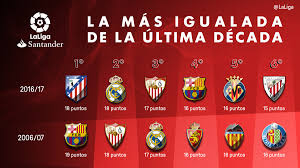
Barcelona vs the Rest of La Liga
Whenever you hear “Barcelona vs” in Laliga, it’s more than just a fixture—it’s an event. Barcelona has long been a benchmark of excellence in Spanish football, with its tiki-taka philosophy revolutionising how the game is played. From Johan Cruyff’s influence to Pep Gladiola’s golden era, Barcelona has consistently been at the forefront of tactical innovation.
Against smaller clubs, a Barca game is often seen as a final. Teams like Levante FC prepare with extraordinary intensity because beating Barcelona is a season-defining achievement. For fans, it’s an unforgettable moment, and for players, it’s a chance to showcase their talent on the biggest stage.
Yet, Barcelona’s dominance doesn’t mean easy wins. Clubs like Atlantic Madrid, Valencia, and Villarreal have historically made life difficult for FCB. And then, there’s Levante UD, a team that has famously pulled off some of the most shocking upsets in La Liga history. Their Levante – Barcelona clashes are remembered for drama, goals, and moments that defy the odds.
Barcelona also serves as La Liga’s global ambassador. Every barcelona game draws international attention, whether it’s a Champions League night or a league clash. With players like Lamine Yamal emerging, Barcelona continues to be a team that fans worldwide follow closely, ensuring that “Barcelona vs” remains one of the most searched phrases in football.
Spotlight on Levante in La Liga
While Barcelona and Real Madrid often dominate the headlines, Levant e UD has its own unique place in La Liga history. Based in Valencia, Levant e is a club that embodies resilience. Known affectionately as “Los Grantors” (The Frogs), they represent the underdog spirit that makes La Lina so captivating.
Levant e may not have the financial resources of giants like Barcelona, but they make up for it with passion and determination. Their Levant e FC journey has been filled with promotions, relegation’s, and dramatic survival battles. Yet, when they face the likes of Barcelona, their identity shines the brightest.
One name worth highlighting is Iván Romero, a young forward whose talent has been turning heads. Players like Romero symbolize Levante’s strategy of nurturing talent and giving opportunities to emerging stars. With every barca game they play, Levante showcases how smaller clubs contribute to the league’s richness.
The beauty of La Liga lies in the fact that even clubs like Levante, often seen as outsiders, have moments where they dominate headlines. From shocking Barcelona to producing thrilling matches, Levante ensures that Laliga remains unpredictable and exciting.
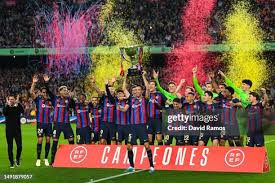
Levante – Barcelone Rivalry Explained
The rivalry between Levante – Barcelone may not carry the same historical weight as El Clásico, but it has grown into one of the most fascinating fixtures in La Liga. It is a clash of opposites: a global powerhouse versus an underdog club that refuses to back down. Whenever a Barca game is scheduled against Levante UD, fans know they’re in for drama, intensity, and often plenty of goals.
The fixture’s significance skyrocketed in 2018, when Levante shocked the world by defeating Barcelona 5–4. That single match destroyed Barca’s unbeaten league season, proving that even the mightiest can fall when faced with sheer determination. Since then, every Levante – Barcelone encounter has been seen as unpredictable.
Levante approaches these matches with a fearless mentality. They may lack Barcelona’s resources, but they make up for it with tactical discipline and counter-attacking sharpness. Players like José Luis Morales, Roger Martí, and recently Iván Romero have often risen to the occasion. For Levante fans, beating Barcelona feels like winning a trophy, while for Barcelona, losing to Levante is a nightmare they cannot afford.
This rivalry also reflects the beauty of Laliga—a league where every club, regardless of size, has a chance to upset giants. Whether it’s a league game or a Copa del Rey encounter, the atmosphere is electric, the tension is high, and the unpredictability keeps fans glued to their screens.
Levante UD vs FC Barcelona Lineups and Stats
Every fixture between these two sides sparks debates about lineups and strategies. Fans eagerly search for Levante UD vs FC Barcelona lineups because these details often shape how the game unfolds.
For Barcelona, the lineup is usually built around star players and rising talents. In recent seasons, Lamine Yamal has become a central talking point. His speed, dribbling, and creativity add a new dimension to the attack, making him a nightmare for defenders. Alongside him, experienced players like Robert Lewandowski and Frenkie de Jong bring balance and control.
Levante, however, depends on hard work and collective effort. Players like Iván Romero symbolize their approach—young, hungry, and ready to take on the world. When Levante faces Barca, their lineup is designed to stay compact, frustrate the Catalans, and strike through quick transitions.
Looking at the Levante UD vs FC Barcelona stats, the numbers favor Barcelona. Historically, Barca has dominated, with more wins, goals, and clean sheets. Yet Levante’s few victories stand out—such as the 5–4 win in 2018 and their 3–3 comeback in 2021. These games prove that stats don’t always predict outcomes.
Here’s a quick breakdown of their stats:
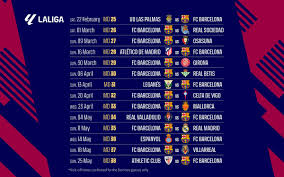
| Category | Barcelona | Levante UD |
|---|---|---|
| Matches Played | 40+ | 40+ |
| Wins | 30+ | 7 |
| Goals Scored | 120+ | 40+ |
| Clean Sheets | 20+ | 5 |
Despite the gap, Levante’s ability to score against Barcelona is notable. Even when they lose, they often manage to find the back of the net, making them a tricky opponent.
Lamine Yamal – The New Barcelona Wonderkid
If you’ve been following La Liga recently, one name dominates the conversation: Lamine Yamal. At just 16 years old, this prodigy has already established himself as a vital part of FCB. His performances in every barcelona game highlight his extraordinary talent and potential to become the face of Spanish football.
Yamal’s journey began in Barcelona’s famed La Masia academy, the same school that produced legends like Messi, Xavi, and Iniesta. From a young age, coaches recognized his incredible dribbling, vision, and composure. By 15, he was already training with the first team, and soon after, he became the youngest player to feature in a La Liga match for Barcelona.
His impact has been immediate. Whether it’s creating chances, scoring goals, or dazzling defenders, Yamal plays with confidence far beyond his years. For fans, he represents hope—the beginning of a new era after Messi.
In matches like Levante UD vs FC Barcelona, Yamal has already shown flashes of brilliance. His ability to break down compact defenses makes him a crucial weapon against teams that sit deep, like Levante FC often does.
Looking ahead, Yamal’s development will shape not only Barcelona’s future but also Laliga’s global image. With rising stars like him, the league is assured of another generation of talent ready to dominate the footballing world.
Where to Watch Levante UD vs FC Barcelona
One of the most common questions fans ask is: where to watch Levante UD vs FC Barcelona? Thankfully, La Liga has expanded globally, ensuring that fans across continents can enjoy the action live.
In Spain, matches are broadcast through Movistar+ and DAZN, the official La Liga partners. Fans across Europe can watch on major sports networks like Sky Sports (UK) or Canal+ (France). In the United States, ESPN holds exclusive broadcasting rights, with matches available on ESPN+ for streaming.
For fans in Asia, Sony Sports Network (India) and beIN Sports (Middle East) provide coverage. Latin American fans can follow the game on ESPN Latin America. And for those who prefer online viewing, official La Liga streaming apps and platforms like YouTube TV, FuboTV, and Hulu + Live TV often carry the matches.
Social media has also changed how fans follow games. Official La Liga and club accounts on Twitter, Instagram, and TikTok provide highlights, live stats, and behind-the-scenes content. This means even if you can’t watch live, you’ll never miss key moments of a Barca game.
So, whether you’re in Valencia cheering for Levante UD or abroad supporting FCB, you’ll always find a way to watch this thrilling clash.
The Global Popularity of La Liga
From Madrid to Mumbai, from Barcelona to Buenos Aires, La Liga has become a global brand. The league’s unique mix of technical brilliance, passionate rivalries, and superstar players ensures its place among the most-watched competitions in the world.
The golden era of Messi and Ronaldo gave La Liga unprecedented global attention. Every barcelona game or Real Madrid fixture became a worldwide event. But even beyond those two, Laliga has consistently attracted world-class talent, making it a hub for football excellence.
In recent years, the league has invested heavily in global outreach. International tours, social media campaigns, and multilingual broadcasts have connected millions of fans. For example, a fan in Nigeria can easily access Levante UD vs FC Barcelona stats, or a teenager in Japan can stream highlights of Lamine Yamal within minutes.
The mention of stars like Marcus Rashford in connection with La Liga transfer rumors shows the league’s appeal. Even Premier League icons are often linked to Spain because of the prestige and playing style. The possibility of players like Rashford joining adds more anticipation for international fans.
Ultimately, La Liga’s global popularity comes down to storytelling. Every season offers a new narrative—whether it’s a title race, an underdog survival battle, or the rise of a wonderkid. Fans worldwide tune in not just for the football, but for the drama that only Laliga can provide.
